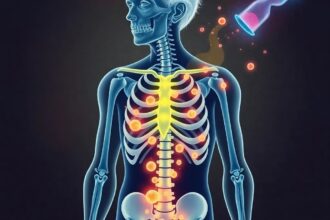Explore the science and benefits of sound therapy, including techniques like binaural beats and Tibetan singing bowls, for improving mental and physical health.
Discover how vibrational medicine uses sound to heal, reduce stress, and improve overall well-being through scientifically-backed techniques.
Introduction to Vibrational Medicine
Vibrational medicine is an emerging field that explores the therapeutic effects of sound and frequency on the human body. According to Dr. Mitchell Gaynor, author of The Healing Power of Sound
, Sound can redress imbalances on every level of physiologic functioning and can play a positive role in the treatment of virtually any medical disorder.
This approach is rooted in the idea that everything in the universe, including our bodies, is in a state of vibration.
The Science Behind Sound Therapy
Sound therapy operates on the principle that specific frequencies can influence brain waves and cellular function. Research published in the Journal of Evidence-Based Integrative Medicine
highlights that binaural beats, for instance, can entrain brainwaves to states conducive to relaxation and focus. When the brain is exposed to two different frequencies, it perceives a third tone that is the mathematical difference between the two,
explains Dr. Jeffrey Thompson, a pioneer in the field of sound healing.
Techniques in Sound Healing
Various sound healing techniques have been developed to harness these frequencies. Tibetan singing bowls, for example, produce rich, harmonic tones that promote deep relaxation. A study in the American Journal of Health Promotion
found that participants who engaged in singing bowl meditation experienced significant reductions in stress and improvements in mood. Similarly, tuning forks are used to apply specific vibrations to different parts of the body, aiding in pain relief and energy balancing.
Music Therapy for Mental Health
Music therapy has been widely recognized for its benefits in treating mental health conditions. The American Music Therapy Association reports that music therapy can reduce symptoms of anxiety and depression, improve cognitive function, and enhance emotional resilience. Music has a unique ability to bypass the cognitive brain and speak directly to the emotional brain,
says Dr. Concetta Tomaino, a leading music therapist.
Practical Tips for Incorporating Sound Healing
Incorporating sound healing into daily life can be simple and effective. Start with guided meditations using binaural beats or invest in a Tibetan singing bowl for daily use. Creating a playlist of calming music can also aid in stress reduction and improve sleep quality. Consistency is key,
advises Dr. Thompson. Regular exposure to therapeutic sounds can lead to lasting improvements in mental and physical health.
Conclusion
Vibrational medicine offers a promising avenue for enhancing well-being through the power of sound. By understanding and utilizing the science behind sound therapy, individuals can take proactive steps towards improving their mental and physical health. As Dr. Gaynor aptly puts it, Sound is not just a tool for healing; it is a way of life.




